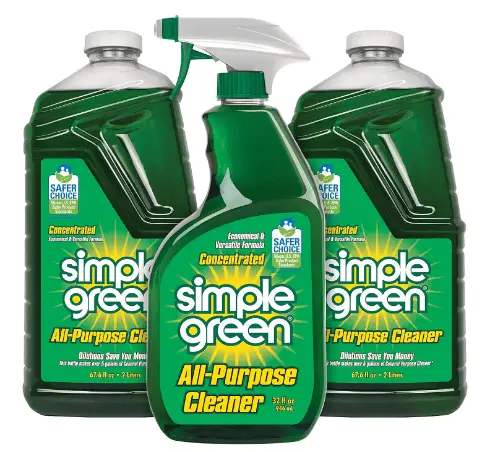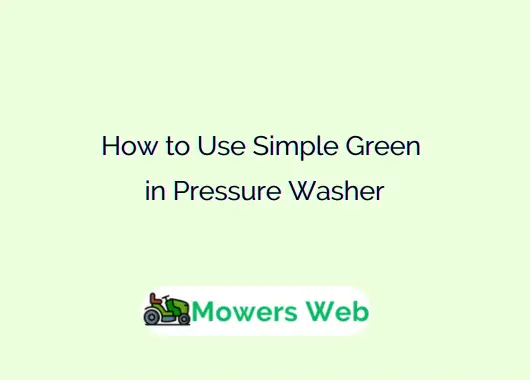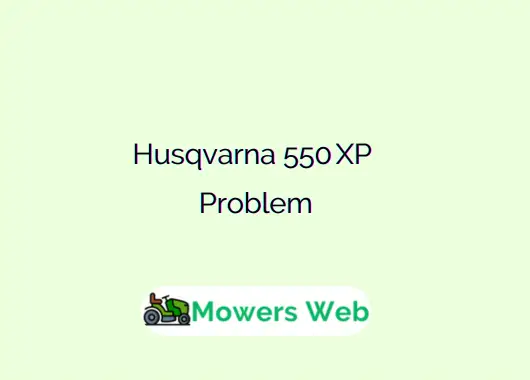Simple Green is a popular, biodegradable, non-toxic cleaner that’s safe for various surfaces when used correctly. In this guide, we’ll walk you through the steps to safely and effectively use Simple Green in a pressure washer, along with tips to maximize results and protect your equipment and surfaces.

How to Use Simple Green in Pressure Washer
1. Check Your Pressure Washer’s Compatibility
Before using Simple Green, confirm that your pressure washer is designed to handle cleaning solutions. Most electric and gas-powered pressure washers have a detergent tank or siphon tube for applying cleaners.
Check the manufacturer’s manual to ensure your model supports chemical use. Some pressure washers require a specific soap nozzle (usually a low-pressure black nozzle) to mix detergent with water.
If your pressure washer doesn’t have a built-in detergent tank, you can use an external soap applicator or a foam cannon attachment. Avoid using Simple Green in high-pressure settings, as this can reduce its effectiveness and damage surfaces.
2. Choose the Right Simple Green Product
Simple Green offers several products, but the classic Simple Green All-Purpose Cleaner is the most commonly used for pressure washing. For heavy-duty tasks like removing grease or oil stains, consider Simple Green Pro HD, designed for tough industrial cleaning. Always read the product label to ensure it’s suitable for your surface and pressure washer.
3. Dilute Simple Green Properly
Simple Green is a concentrated cleaner and must be diluted before use in a pressure washer to prevent damage to surfaces or the machine. The dilution ratio depends on the cleaning task and surface type. Here are general guidelines:
- Light cleaning (e.g., siding, vehicles): Mix 1 part Simple Green with 10 parts water (1:10 ratio).
- Medium cleaning (e.g., decks, fences): Use a 1:5 ratio.
- Heavy-duty cleaning (e.g., concrete, grease stains): Use a 1:3 ratio or stronger, as per the product label.
For example, to make a 1:10 dilution for light cleaning, mix 1 cup of Simple Green with 10 cups (2.5 gallons) of water. Always dilute in a clean bucket or the pressure washer’s detergent tank, and never pour undiluted Simple Green directly into the machine.
Related How to Use Greenworks Pressure Washer With Soap
4. Prepare Your Pressure Washer
- Fill the detergent tank: If your pressure washer has a built-in tank, pour the diluted Simple Green solution into it. If using a siphon tube, place the tube in a bucket containing the diluted solution.
- Attach the soap nozzle: Switch to the low-pressure soap nozzle (usually black) to ensure the cleaner is applied properly. High-pressure nozzles can strip away the cleaner before it has time to work.
- Test the flow: Run a small amount of water through the system to ensure the detergent is being drawn correctly.
5. Test on a Small Area
Before cleaning a large surface, test the diluted Simple Green solution on a small, inconspicuous area. This ensures the solution won’t damage or discolor the material. Let it sit for a minute, rinse, and inspect for any adverse effects.
Related What Type of Oil for a Pressure Washer(+Top 3 Best Oil Picks)
6. Apply Simple Green with the Pressure Washer
- Work in sections: Start at the bottom of the surface and work upward to prevent streaking. Hold the spray wand at a 45-degree angle, about 6-12 inches from the surface.
- Apply evenly: Move the wand in a sweeping motion to distribute the Simple Green solution evenly. Let the cleaner sit for 1-3 minutes to break down dirt and stains, but don’t let it dry on the surface.
- Avoid overuse: Apply only as much solution as needed to avoid wasting product or leaving residue.
7. Rinse Thoroughly
Switch to a high-pressure nozzle (e.g., 25- or 40-degree) and rinse the surface thoroughly with clean water. Start from the top and work downward to ensure all Simple Green residue is removed. Leftover cleaner can attract dirt or leave a film, especially on glossy surfaces like vehicles.
8. Clean and Store Your Pressure Washer
After use, flush the pressure washer system with clean water to remove any remaining Simple Green. This prevents buildup in the pump, hoses, or nozzles, which can cause clogs or corrosion over time. Store your pressure washer according to the manufacturer’s instructions.
Related Mower Productivity Calculator
Common Surfaces and Dilution Recommendations
- Concrete driveways: Use a 1:3 to 1:5 ratio for oil stains and grime.
- Wood decks: Use a 1:10 ratio to avoid stripping finishes.
- Vinyl siding: Use a 1:10 ratio to clean without damaging the surface.
- Vehicles: Use a 1:20 ratio for a gentle clean, especially on car paint.
Why Use Simple Green in a Pressure Washer?
Simple Green is a versatile, eco-friendly cleaning solution that works well with pressure washers. Its concentrated formula cuts through dirt, oil, and stains while being gentle enough for most surfaces when diluted properly.
Unlike harsher chemicals, Simple Green is non-corrosive, making it safe for your pressure washer’s internal components and the environment. It’s ideal for cleaning concrete, wood, vinyl, aluminum, and even vehicles, provided you follow dilution guidelines and test it on surfaces first.
Related Mowing Time By Deck Size Calculator
Tips for Best Results
- Work on a cool day: Avoid pressure washing in direct sunlight or high heat, as Simple Green can dry too quickly and leave streaks.
- Pre-treat tough stains: For stubborn grease or oil stains, apply a stronger Simple Green dilution directly to the area with a brush before pressure washing.
- Use the right nozzle: Always use the low-pressure soap nozzle for applying Simple Green and switch to a wider-angle nozzle (25- or 40-degree) for rinsing to avoid surface damage.
- Protect nearby plants: Rinse plants or grass near the cleaning area with water before and after to prevent damage from runoff.
- Follow safety precautions: Wear gloves, safety glasses, and closed-toe shoes when pressure washing. Avoid spraying Simple Green near electrical components or outlets.
Related Lawn Mowing Cost Calculator
Troubleshooting Common Issues
- Cleaner not dispensing: Check the siphon tube or detergent tank for clogs, and ensure you’re using the low-pressure soap nozzle.
- Streaks or residue: Rinse more thoroughly or use a weaker dilution.
- Surface damage: Test the solution and pressure settings on a small area first, and avoid high-pressure nozzles on delicate surfaces.
Final words
Using Simple Green in a pressure washer is an excellent way to boost cleaning power while keeping the process eco-friendly and safe. By following the proper dilution ratios, using the correct nozzles, and rinsing thoroughly, you can achieve professional-level results on a variety of surfaces. Always prioritize safety, test your setup, and maintain your pressure washer to ensure long-lasting performance.




